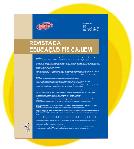New insights for statistical analysis of blood pressure response to exercise in elderly hypertensive women
Abstract
It is possible to identity responders, low responders and adverse responders to exercise by looking for the variability of scores around the mean. Thus, it is important to identify these groups of subjects to amplify the understanding of the initial alternative hypothesis. In addition, the use of complementary statistics, as control of regression to the mean, standard error of measurement and smallest real difference presents new insights for a better understanding of the practical implications of data interpretation in exercise research. This article discusses the use of complementary statistical procedures that allow for critical interpretation of data while avoiding bias in studies with exercise and blood pressure. We present real data from an experimental 10-week RT program and its effect on SBP in hypertensive elderly women. We demonstrate that not every difference in systolic blood pressure carries a clinical meaning, but are characterized as a measurement error. In addition, responsiveness to exercise will, in the great majority of cases, be misinterpretation of regression to the mean and random variation. The complementary statistics presented in this review should be considered in future studies, and are also useful for other variables such as muscle strength, cytokines, triglycerides, and insulin.
Downloads
Metrics
• Authors retain the copyright and full publishing rights without restrictions.

This work is licensed under a Creative Commons Attribution 4.0 International License.













_1502.jpg)











